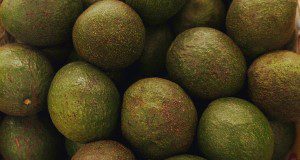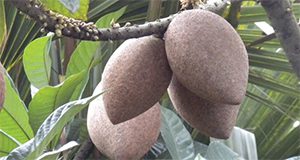This is the Spanish translation of Recommendations for Control and Mitigation of Laurel Wilt and Ambrosia Beetle Vectors in Commercial Avocado Groves in Florida (HS1360). Laurel wilt and the ambrosia beetle vectors that transmit this lethal disease have and will continue to affect avocado production in Florida. At least 50% of the commercial producers are Hispanic Americans and some are more comfortable with publications in Spanish. The translator, Rubén Regalado, and reviewer, Carlos Balerdi, are both previous employees of UF/IFAS.
https://edis.ifas.ufl.edu/hs1379
Tag: Fredy H. Ballen
Sample Profitability and Cost Estimates of Producing Sweet Flavored Carambola (Averrhoa carambola) in south Florida.
This 7-page fact sheet written by Fredy H. Ballen, Aditya Singh, Edward A. Evans, and Jonathan H. Crane and published by the UF/IFAS Food and Resource Economics Department reports the costs and returns of operating an established sweet-flavored carambola grove in south Florida. It is intended to provide a reference to help estimate the financial requirements of running an established grove. Information was collected through field interviews with growers and industry specialists about a wide range of production practices used on small farms of five acres or fewer.
https://edis.ifas.ufl.edu/fe1079
Recommendations for Control and Mitigation of Laurel Wilt and Ambrosia Beetle Vectors in Commercial Avocado Groves in Florida
The lethal laurel wilt epidemic affecting avocado trees in Florida is caused by a fungal pathogen-ambrosia beetle complex (LW-AB). The death of over 120,000 commercial avocado trees in Florida may be attributed to LW-AB. Recommendations for control and mitigation of this epidemic are needed to guide commercial producers in their decision-making process. This new 8-page publication of the UF/IFAS Horticultural Sciences Department outlines the LW-AB epidemic, provides information on the pathogen and ambrosia beetle vectors, provides a brief outline of current research findings, and offers recommendations for the control and mitigation of LW-AB. Written by Jonathan H. Crane, Daniel Carrillo, Edward A. Evans, Romina Gazis, Bruce Schaffer, Fredy Ballen, and Jeff Wasielewski.
https://edis.ifas.ufl.edu/hs1360
Cost Estimates of Producing Sugar Apple (Annona squamosa L.) in South Florida
Because of the growing interest in alternative tropical fruit crops to diversify farm income, this 6-page fact sheet written by Fredy H. Ballen, Aditya Singh, Edward Evans, and Jonathan Crane and published by the UF/IFAS Food and Resource Economics Department offers an estimate of costs and returns associated with operating an established sugar apple orchard in south Florida.
http://edis.ifas.ufl.edu/fe1053
Sample Productivity and Cost Estimates of Producing Longan (Dimocarpus longan Lour.) in South Florida
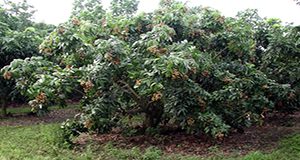
Interest is growing in minor tropical fruit crops. This 6-page publication written by Fredy H. Ballen, Edward A. Evans, Aditya Singh, and Jonathan H. Crane and published by the UF/IFAS Food and Resource Economics Department provides an estimate of the costs and returns associated with the operation of an established longan grove in south Florida. Information presented in this article was obtained through field interviews with growers and industry experts; it reflects a wide variety of production practices in small longan orchards of 1 to 4 acres and should help estimate the financial requirements of operating an established grove.
http://edis.ifas.ufl.edu/fe1049
Cost and Return Estimates of a Mamey Sapote Grove in South Florida, 2017
The objective of this 6-page fact sheet written by Fredy H. Ballen, Aditya Singh, Edward A. Evans, and Jonathan Crane and published by the UF/IFAS Food and Resource Economics Department is to provide an estimate of the costs and returns associated with an established mamey sapote orchard in south Florida.
http://edis.ifas.ufl.edu/fe1039
Cost Estimates of Producing Pink Guava (Psidium guajava L.) in South Florida
This 6-page fact sheet written by Edward Evans, Fredy H. Ballen, Jonathan Crane, and Aditya Singh and published by the UF/IFAS Food and Resource Economics Department presents the estimated costs and returns associated with the operation of an established pink guava grove in south Florida. The information presented was collected through field interviews with growers and industry specialists; it reflects a wide diversity of production techniques in small guava orchards. The information presented is intended only as a reference to estimate the financial requirements of operating an established pink guava grove.
http://edis.ifas.ufl.edu/fe1036
Cost Estimates of Producing Sapodilla in South Florida, 2017
This 6-page fact sheet written by Edward A. Evans, Fredy H. Ballen, Aditya Singh, and Jonathan H. Crane and published by the UF/IFAS Food and Resource Economics Department provides an estimate of the costs and returns associated with an established sapodilla orchard in south Florida. The information presented is based on a wide range of production practices collected through field interviews with growers and industry specialists and is intended as a guide to estimate the financial aspects of operating an established sapodilla grove. Please note that sapodilla has been assessed by the UF/IFAS Invasive Plants Working Group as potentially invasive in south and central Florida. It should not be planted in home landscapes or in groves near natural areas. Sapodilla plantings must be fenced, and the fruit must be moved in covered vehicles to prevent fruit being eaten by wildlife and the plant from infesting areas outside the grove.
http://edis.ifas.ufl.edu/fe1015
Ocho Pasos para Desarrollar un Plan Simple de Mercadeo

El mercadeo es parte esencial de un negocio. De hecho es el corazón de cualquier negocio que sirva la función vital de convertir actividades de producción en desempeño financiero, asegurando la supervivencia del negocio. El mercadeo es clave, sin importar el tipo de negocio (incluyendo la agricultura).
This 5-page fact sheet provides a rationale for developing a marketing plan, a step-by-step process for creating one, and a marketing plan worksheet. Written by Edward A. Evans and Fredy H. Ballen, and published by the UF Department of Food and Resource Economics. Translated into Spanish November 2015. (Photo credit: Thinkstock)
http://edis.ifas.ufl.edu/fe978
(also available in English as “Eight Steps to Developing a Simple Marketing Plan” at http://edis.ifas.ufl.edu/fe967)
Eight Steps to Developing a Simple Marketing Plan

Marketing is an essential component of any business, including agriculture. Despite the important role of marketing, many smallholding operators/growers are reluctant to create a marketing plan. This 5-page fact sheet provides a rationale for developing a marketing plan, a step-by-step process for creating one, and a marketing plan worksheet. Written by Edward A. Evans and Fredy H. Ballen, and published by the UF Department of Food and Resource Economics, August 2015. (Photo credit: iStock/Thinkstock)
http://edis.ifas.ufl.edu/fe967
An Overview of US Blueberry Production, Trade, and Consumption, with Special Reference to Florida
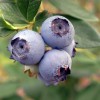 This 8-page fact sheet provides updated information about the recent trends in blueberry production, consumption, and trade for the US market. Current and future short-term trends are discussed. Price analysis at the wholesale level for selected markets on the US East Coast (New York City) and US West Coast (Los Angeles) are presented. Also, the national average retail prices for conventional and organic blueberries are presented. Written by Edward A. Evans and Fredy H. Ballen, and published by the UF Department of Food and Resource Economics, October 2014.
This 8-page fact sheet provides updated information about the recent trends in blueberry production, consumption, and trade for the US market. Current and future short-term trends are discussed. Price analysis at the wholesale level for selected markets on the US East Coast (New York City) and US West Coast (Los Angeles) are presented. Also, the national average retail prices for conventional and organic blueberries are presented. Written by Edward A. Evans and Fredy H. Ballen, and published by the UF Department of Food and Resource Economics, October 2014.
http://edis.ifas.ufl.edu/fe952
A Synopsis of US Consumer Perception of Genetically Modified (Biotech) Crops
 Over the last few decades, the use of modern tools of molecular biology has made it possible to discover, isolate, and introduce several important agricultural traits in cultivated crops. Such improvements are usually accomplished by the technique known as genetic engineering, also known as genetic modification. The aim of this article is to provide an update on recent developments with respect to GM food crops, as well as an assessment of US public opinion with regards to GM foods in general. A successful case of how a US-grown GM crop gained acceptance in one of the strictest fruit importing countries is presented. This 8-page fact sheet was written by Edward A. Evans and Fredy H. Ballen, and published by the UF Department of Food and Resource Economics, June 2013.
Over the last few decades, the use of modern tools of molecular biology has made it possible to discover, isolate, and introduce several important agricultural traits in cultivated crops. Such improvements are usually accomplished by the technique known as genetic engineering, also known as genetic modification. The aim of this article is to provide an update on recent developments with respect to GM food crops, as well as an assessment of US public opinion with regards to GM foods in general. A successful case of how a US-grown GM crop gained acceptance in one of the strictest fruit importing countries is presented. This 8-page fact sheet was written by Edward A. Evans and Fredy H. Ballen, and published by the UF Department of Food and Resource Economics, June 2013.
http://edis.ifas.ufl.edu/fe934
US-Panama Free Trade Agreement: What Is in It for Florida Agriculture?
 On October 12, 2011, four years after it was agreed upon by both parties, the United States government signed into law the reciprocal US–Panama Free Trade Agreement (FTA)/Trade Promotion Agreement (TPA). The FTA provides US companies with better access to the Panamanian market and ensures that most US exports of consumer and industrial products to Panama will be accorded immediate duty-free privileges. The main elements of the US–Panama FTA as it relates to agricultural trade revolve around market access, agricultural export subsidies, safeguards, the sugar compensation mechanism, and sanitary and phytosanitary measures. This 11-page fact sheet was written by Edward A. Evans and Fredy H. Ballen, and published by the UF Department of Food and Resource Economics, May 2013.
On October 12, 2011, four years after it was agreed upon by both parties, the United States government signed into law the reciprocal US–Panama Free Trade Agreement (FTA)/Trade Promotion Agreement (TPA). The FTA provides US companies with better access to the Panamanian market and ensures that most US exports of consumer and industrial products to Panama will be accorded immediate duty-free privileges. The main elements of the US–Panama FTA as it relates to agricultural trade revolve around market access, agricultural export subsidies, safeguards, the sugar compensation mechanism, and sanitary and phytosanitary measures. This 11-page fact sheet was written by Edward A. Evans and Fredy H. Ballen, and published by the UF Department of Food and Resource Economics, May 2013.
http://edis.ifas.ufl.edu/fe932
Estimacion de costos de establecimiento y produccion de papaya en el sur de la Florida en 2012 (FE920)
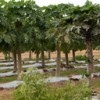 El alza reciente en los precios de la papaya, consecuencia de las restricciones fitosanitarias impuestas a la fruta proveniente de México, ha despertado el interés de productores en el Sur de la Florida, quienes han percibido la oportunidad de suplir la demanda por papaya madura en los Estados Unidos. No obstante, hay mucha incertidumbre con respecto a la viabilidad económica del negocio. El objetivo de este documento es proveer información acerca del retorno económico y los costos de producción de un cultivo de 5 acres de papaya en el Sur de la Florida. Igualmente, se evaluaron precios y rendimientos que permitirían que el negocio fuese rentable en el Sur de Florida. This 7-page fact sheet was written by Edward A. Evans, Fredy H. Ballen, y Jonathan H. Crane, and published by the UF Department of Food and Resource Economics, February 2013.
El alza reciente en los precios de la papaya, consecuencia de las restricciones fitosanitarias impuestas a la fruta proveniente de México, ha despertado el interés de productores en el Sur de la Florida, quienes han percibido la oportunidad de suplir la demanda por papaya madura en los Estados Unidos. No obstante, hay mucha incertidumbre con respecto a la viabilidad económica del negocio. El objetivo de este documento es proveer información acerca del retorno económico y los costos de producción de un cultivo de 5 acres de papaya en el Sur de la Florida. Igualmente, se evaluaron precios y rendimientos que permitirían que el negocio fuese rentable en el Sur de Florida. This 7-page fact sheet was written by Edward A. Evans, Fredy H. Ballen, y Jonathan H. Crane, and published by the UF Department of Food and Resource Economics, February 2013.
http://edis.ifas.ufl.edu/fe920
2012 Cost Estimates of Establishing and Producing Papaya (Carica papaya) in South Florida (FE918)
 With the recent spike in papaya prices due to phytosanitary restrictions on papayas from Mexico, many growers in South Florida are considering getting back into papaya production to target the ripe papaya market. Still, there are a lot of concerns as to whether the crop can be profitable in light of declining yields. Based on this discussion, the objective of this article is to provide needed information on the costs and returns associated with establishing and operating a five-acre papaya orchard in South Florida, and to assess the prices and yields that must be obtained to make a papaya orchard profitable. This 5-page fact sheet was written by Edward A. Evans, Fredy H. Ballen, and Jonathan H. Crane, and published by the UF Department of Food and Resource Economics, December 2012.
With the recent spike in papaya prices due to phytosanitary restrictions on papayas from Mexico, many growers in South Florida are considering getting back into papaya production to target the ripe papaya market. Still, there are a lot of concerns as to whether the crop can be profitable in light of declining yields. Based on this discussion, the objective of this article is to provide needed information on the costs and returns associated with establishing and operating a five-acre papaya orchard in South Florida, and to assess the prices and yields that must be obtained to make a papaya orchard profitable. This 5-page fact sheet was written by Edward A. Evans, Fredy H. Ballen, and Jonathan H. Crane, and published by the UF Department of Food and Resource Economics, December 2012.
http://edis.ifas.ufl.edu/fe918
Una mirada a la produccion, el comercio y el consumo de papaya a nivel mundial (FE917)
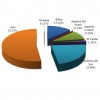 Este artículo provee información referente a las tendencias globales en cuanto a producción, comercio mundial y los países exportadores e importadores de papaya. Written by Edward A. Evans and Fredy H. Ballen, and published by the UF Department of Food and Resource Economics, October 2012.
Este artículo provee información referente a las tendencias globales en cuanto a producción, comercio mundial y los países exportadores e importadores de papaya. Written by Edward A. Evans and Fredy H. Ballen, and published by the UF Department of Food and Resource Economics, October 2012.
http://edis.ifas.ufl.edu/fe917
An Overview of US Papaya Production, Trade, and Consumption (FE914)
![fe914 Figure 1. US fresh papaya imports by origin, 2002–2011 (metric tonnes [t]). Source: USDA/FAS (2012).](http://edis-news.ifas.ufl.edu/wp-content/uploads/2012/09/fe914-100x100.jpg) The United States produces close to 14,000 t of papaya annually. Consumption of the fruit is on the upswing and the development of new cultivars tolerant to the Papaya Ring Spot Virus encourage many growers in South Florida to taking a second look at producing papaya for the domestic market. This 8-page fact sheet provides information on domestic trends in the production and trade of fresh papaya in the U.S. Also included is a price analysis at the wholesale level for representative markets on the US East and West Coasts. Written by Edward A. Evans, Fredy H. Ballen, and Jonathan H. Crane, and published by the UF Department of Food and Resource Economics, September 2012.
The United States produces close to 14,000 t of papaya annually. Consumption of the fruit is on the upswing and the development of new cultivars tolerant to the Papaya Ring Spot Virus encourage many growers in South Florida to taking a second look at producing papaya for the domestic market. This 8-page fact sheet provides information on domestic trends in the production and trade of fresh papaya in the U.S. Also included is a price analysis at the wholesale level for representative markets on the US East and West Coasts. Written by Edward A. Evans, Fredy H. Ballen, and Jonathan H. Crane, and published by the UF Department of Food and Resource Economics, September 2012.
http://edis.ifas.ufl.edu/fe914
An Overview of Global Papaya Production, Trade, and Consumption (FE913)
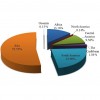 The market demand for tropical fruits has been growing steadily over the past two decades. Global papaya production has grown significantly over the last few years, mainly as a result of increased production in India. Papaya has become an important agricultural export for developing countries, where export revenues of the fruit provide a livelihood for thousands of people, especially in Asia and Latin America. Papaya exports contribute to the growing supply of healthy food products on international markets. The top three exporting countries accounted for 63.28 percent of the total global exports of papaya between 2007 and 2009, with more than half of those exports going to the United States. This 7-page fact sheet provides information on global trends in the production and trade of papaya. An overview of the current and future trends of global papaya production and trade, and the main papaya exporting and importing countries is presented herewith. Written by Edward A. Evans and Fredy H. Ballen, and published by the UF Department of Food and Resource Economics, September 2012.
The market demand for tropical fruits has been growing steadily over the past two decades. Global papaya production has grown significantly over the last few years, mainly as a result of increased production in India. Papaya has become an important agricultural export for developing countries, where export revenues of the fruit provide a livelihood for thousands of people, especially in Asia and Latin America. Papaya exports contribute to the growing supply of healthy food products on international markets. The top three exporting countries accounted for 63.28 percent of the total global exports of papaya between 2007 and 2009, with more than half of those exports going to the United States. This 7-page fact sheet provides information on global trends in the production and trade of papaya. An overview of the current and future trends of global papaya production and trade, and the main papaya exporting and importing countries is presented herewith. Written by Edward A. Evans and Fredy H. Ballen, and published by the UF Department of Food and Resource Economics, September 2012.
http://edis.ifas.ufl.edu/fe913
US/Colombia Free Trade Agreement: What Is in It for Florida Agriculture? (FE905)
 On October 12, 2011, the US Congress ratified a Free Trade Agreement/Trade Promotion Agreement (FTA) with Colombia, five years after it was signed by President George W. Bush. The FTA took effect in May of 2012. This 13-page fact sheet highlights the key elements of the US Colombia FTA as they relate to trade in agricultural commodities, and to examine what is at stake for Florida. Written by Edward A. Evans and Fredy H. Ballen, and published by the UF Department of Food and Resource Economics, July 2012.
On October 12, 2011, the US Congress ratified a Free Trade Agreement/Trade Promotion Agreement (FTA) with Colombia, five years after it was signed by President George W. Bush. The FTA took effect in May of 2012. This 13-page fact sheet highlights the key elements of the US Colombia FTA as they relate to trade in agricultural commodities, and to examine what is at stake for Florida. Written by Edward A. Evans and Fredy H. Ballen, and published by the UF Department of Food and Resource Economics, July 2012.
http://edis.ifas.ufl.edu/fe905
Overview of US Agricultural Trade with China (FE902/FE902)
One bright spot in the US–China trade deficit is the trade of agricultural products, which continues to reflect a trade surplus that has grown considerably within the last decade. This 11-page fact sheet provides an overview of US–China trade of agricultural products, with special focus on produce, specifically over the period 2000 to 2010, and to highlight the main factors driving the widening of the agricultural trade surplus. The implications of modernizing the Chinese agricultural sector for the US fruit and vegetable industry are also discussed. Written by Xiuzhi Wang, Edward A. Evans, and Fredy H. Ballen, and published by the UF Department of Food and Resource Economics, February 2012.
http://edis.ifas.ufl.edu/fe902
